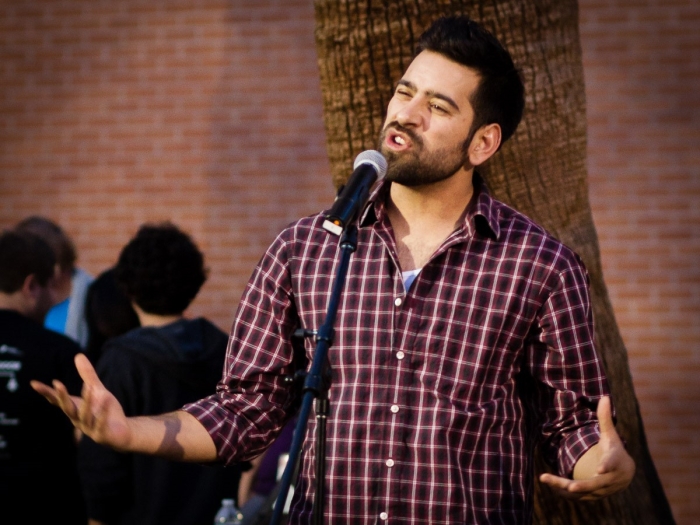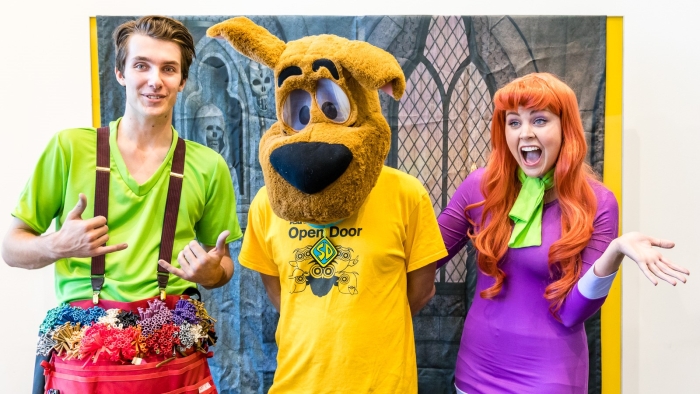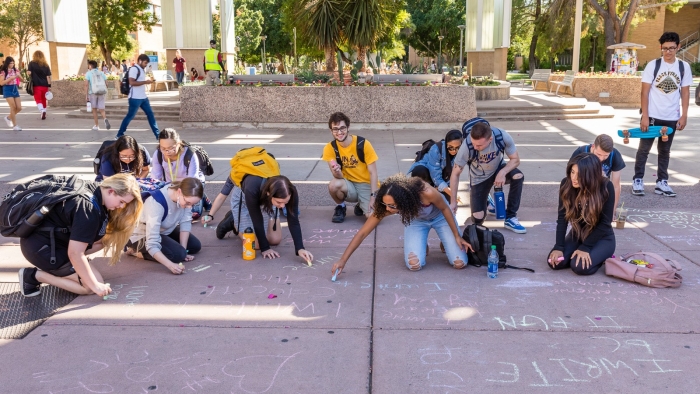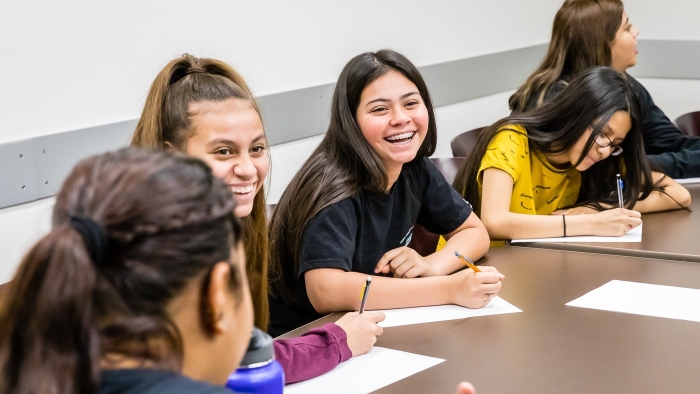Looking forward: ASU English fall 2020 courses to prep for the future
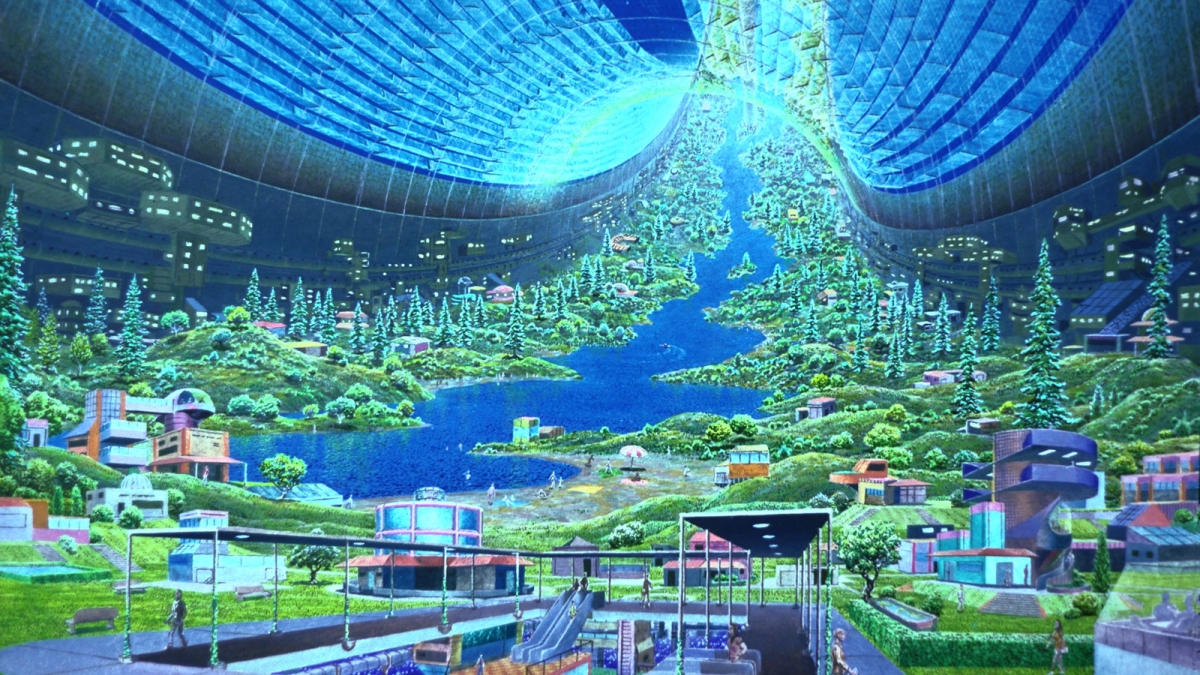
Public domain image of orbital colony Stanford torus, painted by Donald E. Davis, oil on board, for NASA Ames
Although uncertainty abounds today, there is at least one thing you can count on: this fall 2020, edifying and mind-bending courses will be available to you from the Arizona State University Department of English.
Learn how to build alternative worlds in our sci-fi writing class. Or, consider how global events have and will continue to shape both the emergence and the decline of languages. Or get your warm fuzzies in an intellectually rigorous course devoted entirely to the art and industry of Scooby-Doo.
Information about these and other courses is below — but there are even more offerings by the Department of English in the ASU class schedule (search by “ENG,” “FMS,” “LIN” or “APL” prefixes), where you can find both online and in-person options.
ENG 307 — Writing Science Fiction: World-Building in Science Fiction and Fantasy
The author of the dystopian thriller “Scrapper” and the forthcoming eco-fabulist novel “Appleseed” (2021), Matt Bell knows sci-fi. Besides being a serious literary fiction reader and writer, the associate professor of English has been a gaming aficionado for decades. Bell co-wrote “The Last Garrison,” a Dungeons and Dragons novel, and has even published a sort of gaming memoir: “Baldur’s Gate II.”
“I grew up as a reader of science fiction and fantasy, and still am,” Bell said. “My next novel has many science-fictional elements, and the one I'm working on now takes place in an invented world of my own.”
Students in Bell’s “World-Building” course will have access to his considerable, award-winning imagination. He’ll coach participants through drawing maps of planets, continents and cities; creating new languages; designing alien landscapes and then seeding them with ecosystems; and building urban spaces to populate with competing political factions and new forms of government. “During the course of the semester, every student who begins with a blank page will — 15 weeks later — leave with a brand new world, all their own," Bell said.
If you register: World-Building in Science Fiction and Fantasy (class #90344) meets Tuesdays and Thursdays from 1:30 to 2:45 p.m. on ASU’s Tempe campus.
ENG 318 — The Life and Death of Languages
Professor and sociolinguist Karen Adams is the creator of this survey course, which features, essentially, the “back story” of all language. In addition to learning how languages differentiate and become new ones — and how we ended up with 6,000 of them! — students in the class will explore endangered languages, fictional languages like Dothraki and aspects of interspecies communication.
After that? The future! Can we make better machine translation systems? Will brain-to-brain communication be the norm? Will we be able to communicate with aliens at some point and what would an intergalactic language be like?
Nothing will be lost in translation during this course, which will be guided in its online environment by a teaching assistant in the Department of English.
If you register: The Life and Death of Languages (class # 90346) is offered through ASU Online in Session A. It is open to any currently enrolled online student.
ENG 335 — Slam Poetry
It didn’t start in coffee shops of the 1990s. In this course, you’ll learn the real roots of slam poetry — the Harlem Renaissance, confessional and Beat poetry, the Black Arts Movement, performance art and hip hop — as well as the genre’s history, from its birthplace in Chicago to its development in New York City and other parts of the U.S.
Associate Professor Heather Maring, a literature expert and author of “Signs that Sing: Hybrid Poetics in Old English Verse,” is the instructor. “I study medieval literature, which may seem very distant from slam poetry,” Maring said. “But I was drawn to my subject area because I love oral poetry, oral traditions and verbal art that truly lives in performance and in connection with communities. Teaching slam also gives me a chance to reconnect with my roots in creative writing and experimental poetry.”
The syllabus was forged in consultation with past course participants, and the result is a student-centric experience. Fall 2020 Slam Poetry enrollees can choose one or more of three paths through the class: analytical, pedagogical or performative.
If you register: Slam Poetry (class #90348) meets Fridays from 3:05 to 6 p.m. on ASU’s Tempe campus.
FMS 354 — Critical Studies in Animation: Scooby-Doo
You probably already knew ASU had the world’s foremost Scooby-Doo authority on its faculty. But did you know that you, too, can be an expert?
“Critical Studies in Animation: Scooby-Doo” deconstructs this much-loved children’s series, approaching it as a microcosm of television history. Instructor Kevin Sandler, an associate professor of film and media studies in the Department of English, is at work on a book about the famous talking Great Dane; Scooby-Doo turned 50 in 2019 — and so did Sandler.
“It’s hard to imagine Scooby-Doo not being part of my life,” Sandler said. “He’s a touchstone for several generations.”
Lest you think the course is a walk in the dog park, Sandler set the record straight on its rigor.
“This class provides a critical history and understanding of Scooby-Doo from its early incarnations on Saturday morning to 24-hour cable channels to feature films to LEGOs,” he said.
Discussions will center on issues related to the nature of children’s entertainment, free-market vs. governmental regulation, the changing face of network viewership, media conglomeration and globalization and more.
If you register: Scooby-Doo (class #88259) meets Tuesdays and Thursdays from 1:30 to 2:45 p.m. on ASU’s Tempe campus.
ENG 311 — Persuasive Writing
If you’ve ever struggled to get your point across, learning how to construct a more powerful argument might be in your best interest. This hybrid class with Associate Professor of English Mark Hannah, a frequent collaborator with ASU scientists on projects related to issues of communication, covers that and more.
“Language is not neutral,” emphasized Hannah, who practiced law before joining academia. “The ability to analyze complex, real-life scenarios and develop arguments responsive to unique, contextual circumstances is essential.”
Besides helping students wrap their brains around writing the ever-necessary persuasive argument, the course explores issues of strategy, considers the nature of “argument” itself and engages processes of consensus-building and decision-making.
If you register: Persuasive Writing (class #87278) meets virtually one day per week as well as in-person on Thursdays from noon to 1:15 p.m. on ASU’s Tempe campus.
ENG 480 — Methods of Teaching English: Composition
Those aiming to teach language arts in a K–12 setting — or those with simply a curiosity in it — will find this course content compelling. The focus is on a creating “real-world” writing curriculum and delves into adjacent topics, like using technology to teach writing and helping students develop writing portfolios.
Veteran secondary English teacher Michelle Glerum, a fellow of the National Writing Project and summer instructor for ASU’s Central Arizona Writing Project, is the course instructor. Glerum is pursuing a doctorate in English education at ASU, where she focuses on multiliteracies and developing student-centered pedagogy.
“’Methods of Teaching English’ is one of my favorite courses to teach,” she said, “because we focus not only on fostering pedagogical prowess but also on understanding the facets of our own identity as educators and people, developing as teacher-researchers, and understanding sustainable teaching practices that allow us to create a support system for personal and professional growth.”
If you register: Methods of Teaching English: Composition (class #79460) meets virtually one day per week as well as in-person on Tuesdays from 3 to 4:15 p.m. on ASU’s Tempe campus.
More Arts, humanities and education

ASU professor's project helps students learn complex topics
One of Arizona State University’s top professors is using her signature research project to improve how college students learn science, technology, engineering, math and medicine.Micki Chi, who is a…

Award-winning playwright shares her scriptwriting process with ASU students
Actions speak louder than words. That’s why award-winning playwright Y York is workshopping her latest play, "Becoming Awesome," with actors at Arizona State University this week. “I want…

Exceeding great expectations in downtown Mesa
Anyone visiting downtown Mesa over the past couple of years has a lot to rave about: The bevy of restaurants, unique local shops, entertainment venues and inviting spaces that beg for attention from…



